Collapse of a Coastal Revetment Due to the Combined Effect of Anthropogenic and Natural Disturbances
Abstract
:1. Introduction
2. Materials and Methods
2.1. Hujeong Beach
2.2. Video Monitoring and Wave Measurements
3. Results
3.1. Beach Erosion
3.2. Revetment Collapse
4. Discussion
5. Conclusions
Author Contributions
Funding
Institutional Review Board Statement
Informed Consent Statement
Data Availability Statement
Conflicts of Interest
References
- Mentaschi, L.; Vousdoukas, M.I.; Pekel, J.F.; Voukouvalas, E.; Feyen, L. Global long-term observations of coastal erosion and accretion. Sci. Rep. 2018, 8, 12876. [Google Scholar] [CrossRef] [PubMed] [Green Version]
- Uda, T. Japan’s Beach Erosion: Reality and Future Measures; World Scientific: Singapore, 2010. [Google Scholar]
- DEAN, R.G. Cross-shore sediment transport processes. In Advances In Coastal And Ocean Engineering; World Scientific: Singapore, 1995; Volume 1, pp. 159–220. [Google Scholar]
- Davidson-Arnott, R.; Bauer, B.; Houser, C. Introduction to Coastal Processes and Geomorphology; Cambridge University Press: Cambridge, UK, 2019. [Google Scholar]
- Kamphuis, J.W. Introduction to Coastal Engineering and Management; World Scientific: Singapore, 2020; Volume 48. [Google Scholar]
- Forbes, D.L.; Parkes, G.S.; Manson, G.K.; Ketch, L.A. Storms and shoreline retreat in the southern Gulf of St. Lawrence. Mar. Geol. 2004, 210, 169–204. [Google Scholar] [CrossRef]
- Brooks, S.M.; Spencer, T.; Christie, E.K. Storm impacts and shoreline recovery: Mechanisms and controls in the southern North Sea. Geomorphology 2017, 283, 48–60. [Google Scholar] [CrossRef] [Green Version]
- Davidson, M.A.; Turner, I.L.; Splinter, K.D.; Harley, M.D. Annual prediction of shoreline erosion and subsequent recovery. Coast. Eng. 2017, 130, 14–25. [Google Scholar] [CrossRef] [Green Version]
- Kim, K.-H. Mitigation of Beach Erosion after Coastal Road Construction. J. Coast. Res. 2011, 27. [Google Scholar] [CrossRef]
- Bush, D.M.; Pilkey, O.H.; Neal, W.J. Coastal Topography, Human Impact on. In Marine Policy & Economics; Academic Press: Cambridge, MA, USA, 2010; pp. 581–590. [Google Scholar]
- Van Rijn, L.C. Coastal erosion and control. Ocean Coast. Manag. 2011, 54, 867–887. [Google Scholar] [CrossRef]
- Fraser, S.; Raby, A.; Pomonis, A.; Goda, K.; Chian, S.C.; Macabuag, J.; Offord, M.; Saito, K.; Sammonds, P. Tsunami damage to coastal defences and buildings in the March 11th 2011 M w 9.0 Great East Japan earthquake and tsunami. Bull. Earthq. Eng. 2012, 11, 205–239. [Google Scholar] [CrossRef]
- Jayaratne, R.; Premaratne, B.; Mikami, T.; Matsuba, S.; Shibayama, T.; Esteban, M.; Marriott, M. Destruction of Coastal Structures after the 2011 Great East Japan Earthquake and Tsunami. In Handbook of Coastal Disaster Mitigation for Engineers and Planners; Butterworth-Heinemann: Oxford, UK, 2015; pp. 349–362. [Google Scholar] [CrossRef]
- Kato, F.; Suwa, Y.; Watanabe, K.; Hatogai, S. Mechanisms of coastal dike failure induced by the Great East Japan Earthquake Tsunami. Coast. Eng. Proc. 2012, 1, 1–9. [Google Scholar] [CrossRef]
- Sugano, T.; Nozu, A.; Kohama, E.; Shimosako, K.-I.; Kikuchi, Y. Damage to coastal structures. Soils Found. 2014, 54, 883–901. [Google Scholar] [CrossRef] [Green Version]
- Morton, R.A. Effects of Hurricane Eloise on beach and coastal structures, Florida Panhandle. Geology 1976, 4, 277–280. [Google Scholar] [CrossRef]
- Robertson, I.N.; Riggs, H.R.; Yim, S.C.; Young, Y.L. Lessons from Hurricane Katrina storm surge on bridges and buildings. J. Waterw. Port Coast. Ocean Eng. 2007, 133, 463–483. [Google Scholar] [CrossRef]
- Jóia Santos, C.; Andriolo, U.; Ferreira, J.C. Shoreline Response to a Sandy Nourishment in a Wave-Dominated Coast Using Video Monitoring. Water 2020, 12, 1632. [Google Scholar] [CrossRef]
- Andriolo, U. Nearshore wave transformation domains from video imagery. J. Mar. Sci. Eng. 2019, 7, 186. [Google Scholar] [CrossRef] [Green Version]
- Chang, Y.S.; Jin, J.-Y.; Jeong, W.M.; Kim, C.H.; Do, J.-D. Video Monitoring of Shoreline Positions in Hujeong Beach, Korea. Appl. Sci. 2019, 9, 4984. [Google Scholar] [CrossRef] [Green Version]
- Do, J.D.; Jin, J.Y.; Jeong, W.M.; Chang, Y.S. Observation of Rapid Seabed Erosion Near Closure Depth During a Storm Period at Hujeong Beach, South Korea. Geophys. Res. Lett. 2019, 46, 9804–9812. [Google Scholar] [CrossRef]
- Van Rijn, L. Longshore Sand Transport. In Proceedings of the 28th ICCE, Cardiff, UK, 7–12 July 2002; pp. 2439–2451. [Google Scholar]
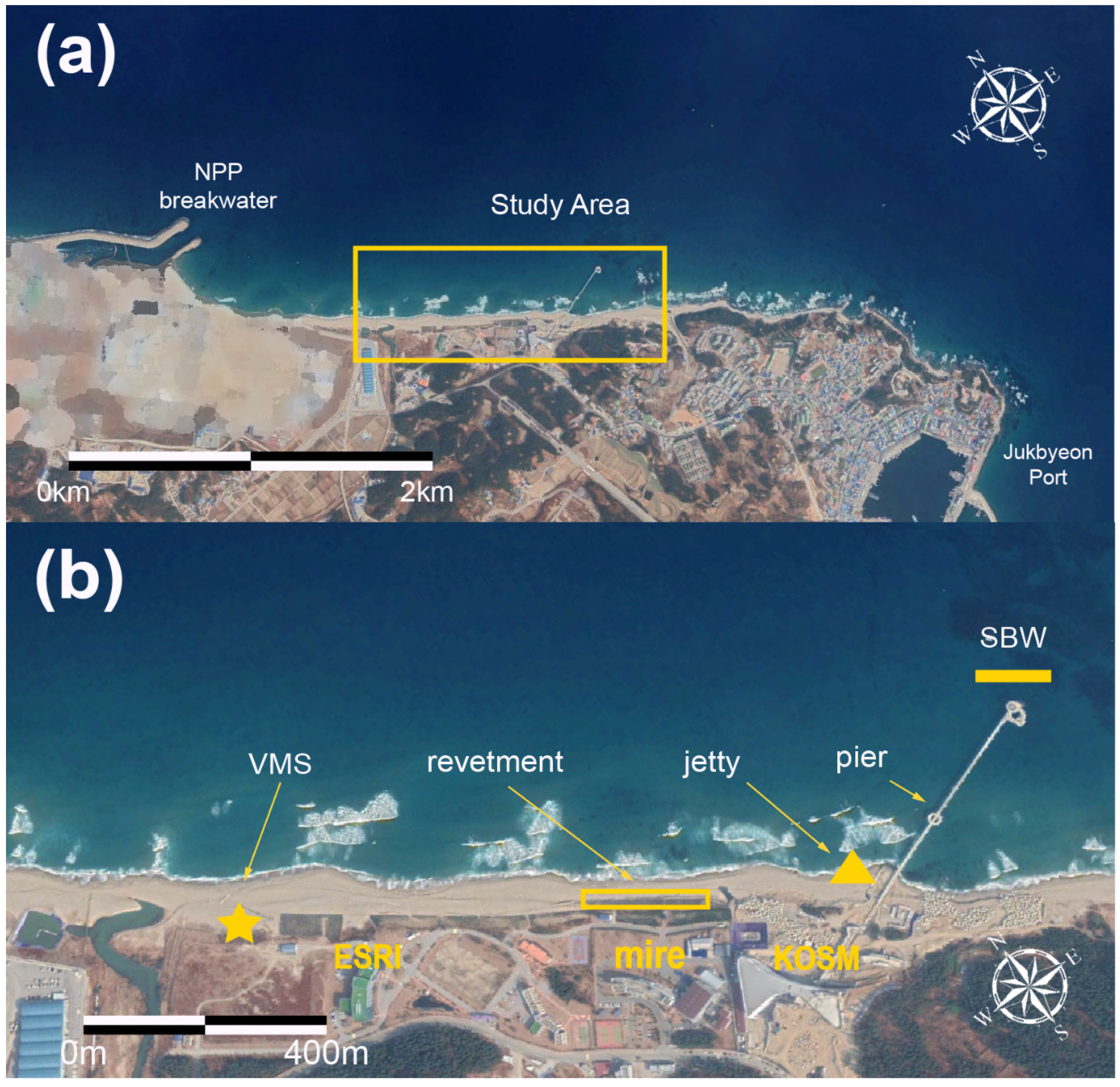
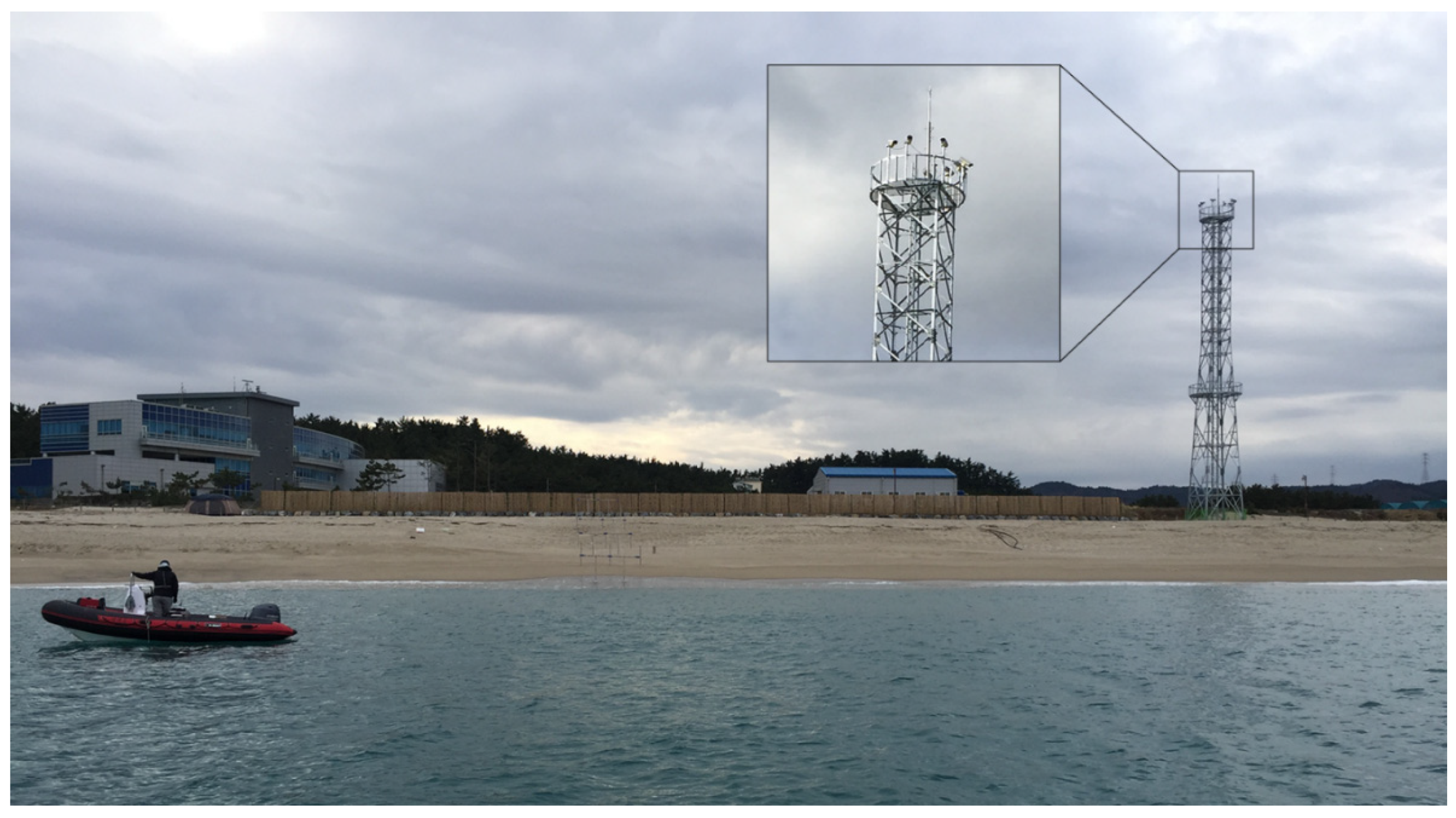
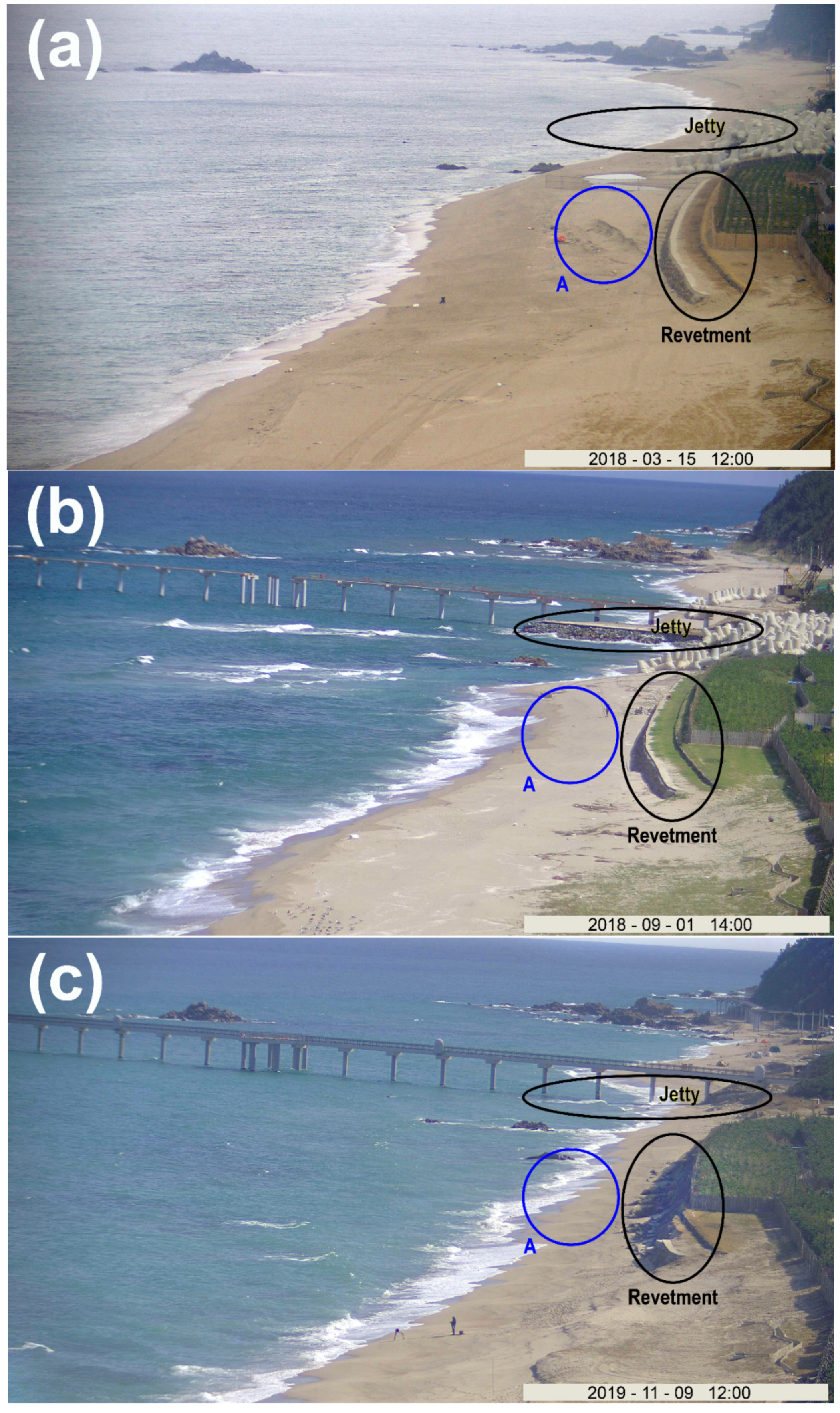

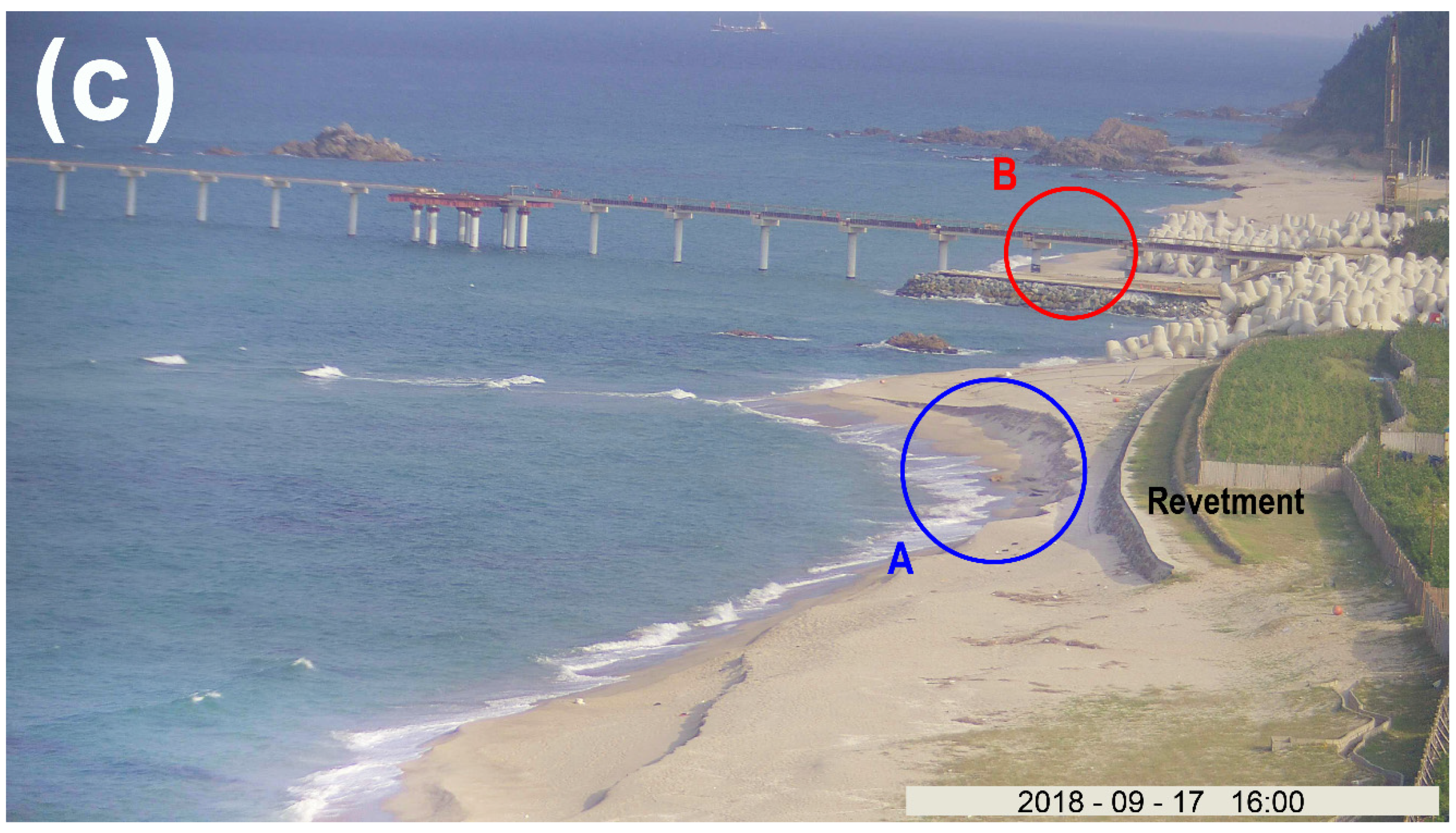

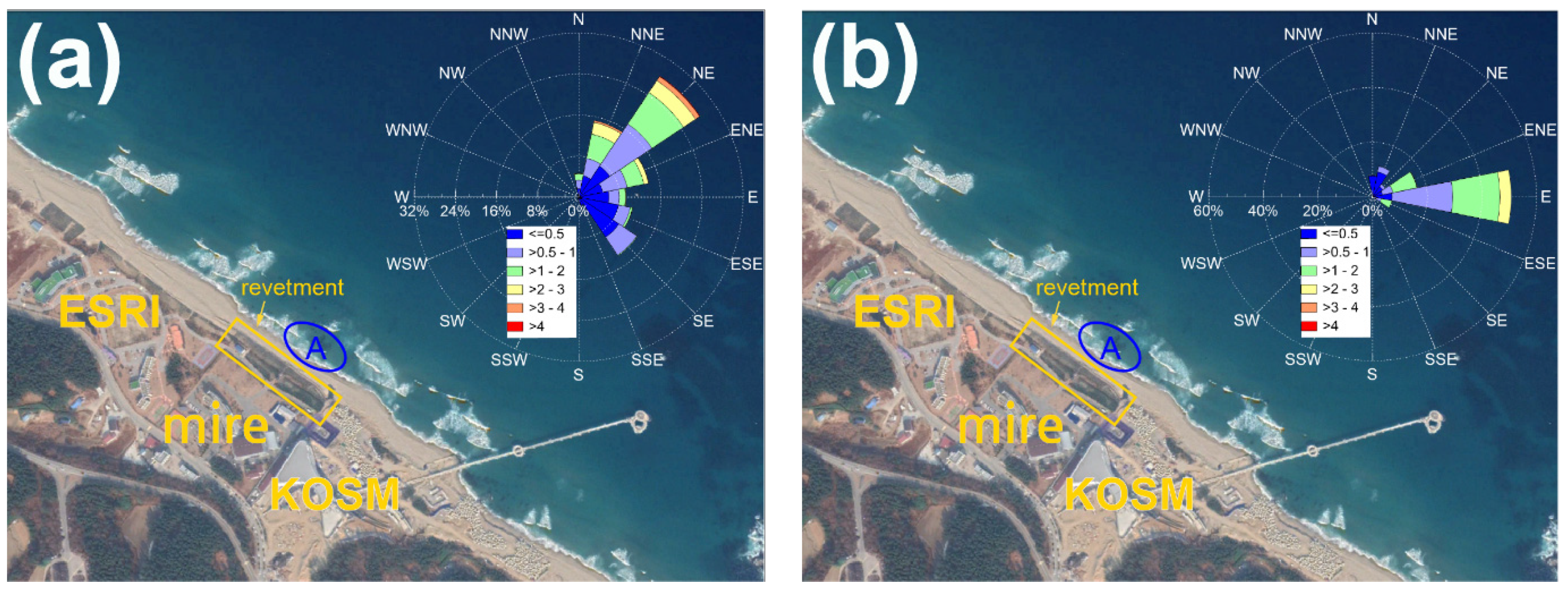


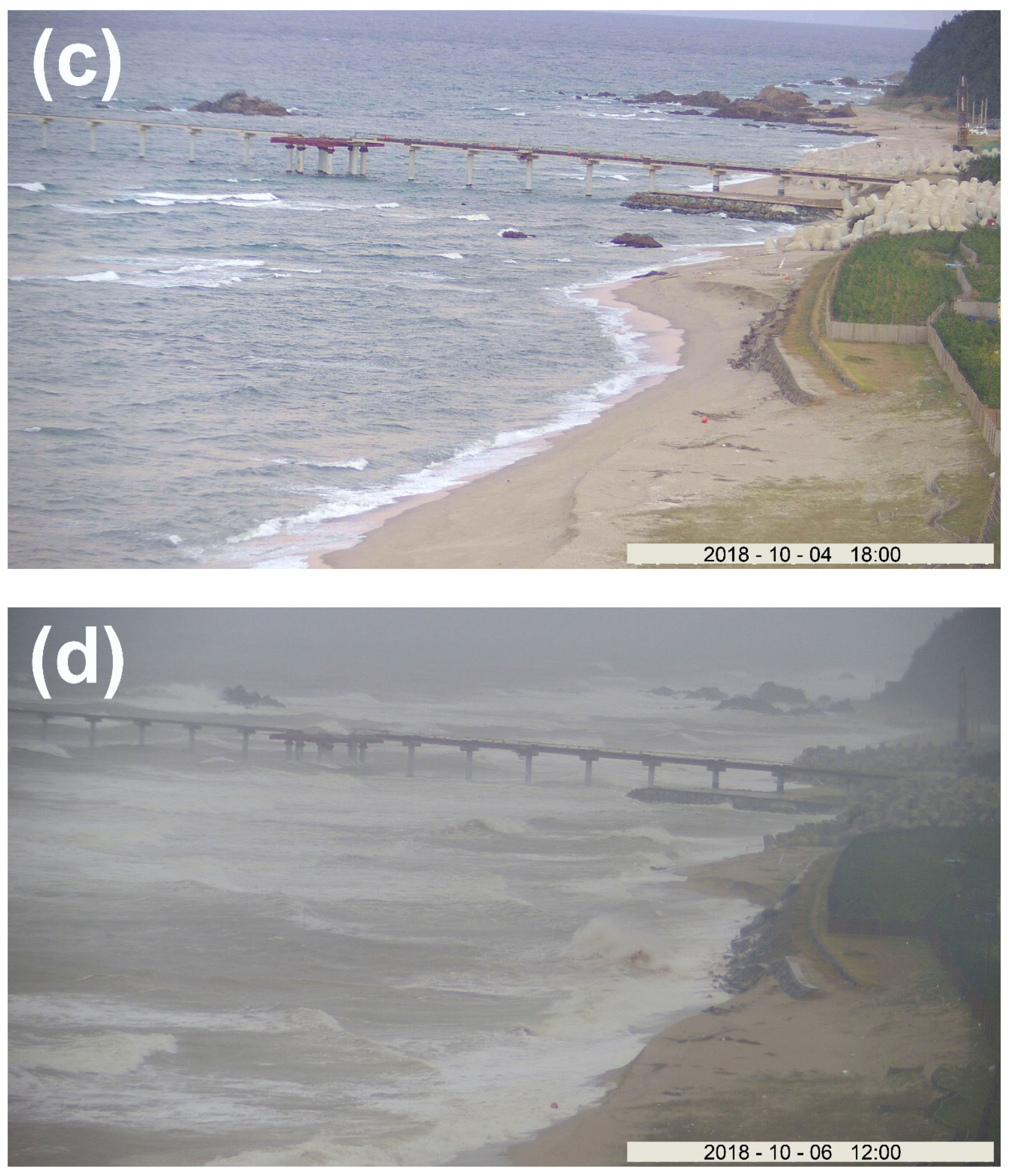


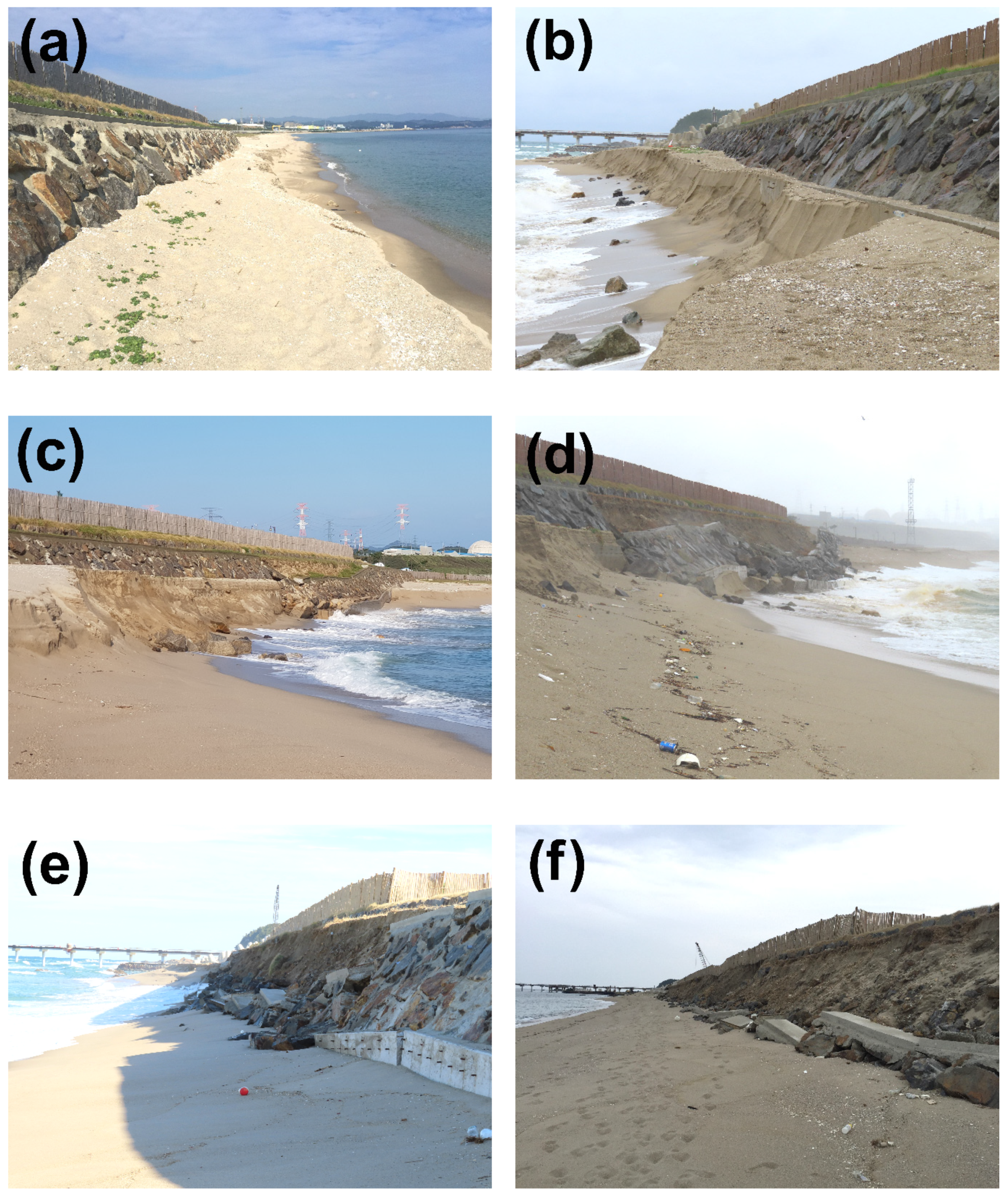

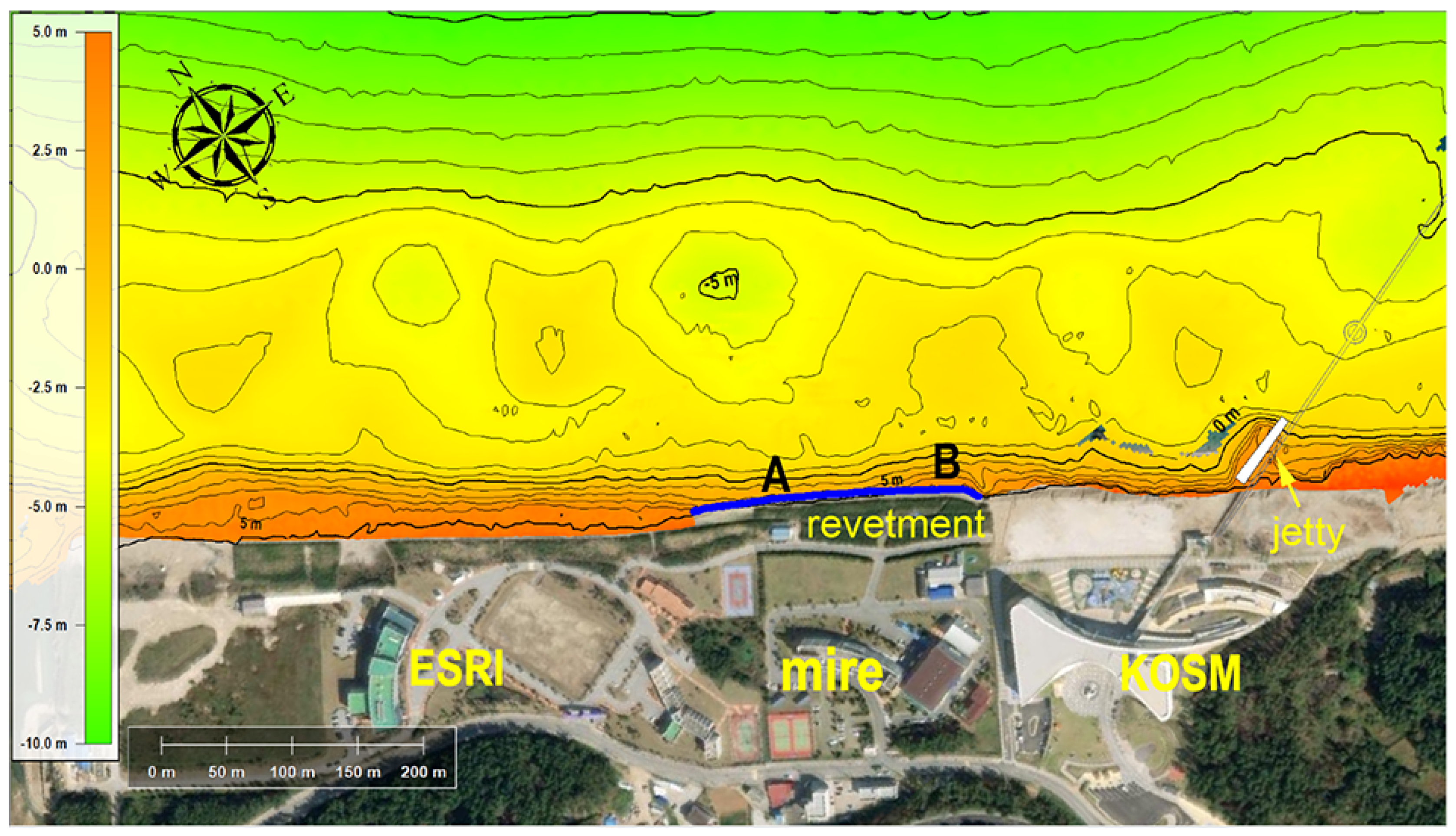
Publisher’s Note: MDPI stays neutral with regard to jurisdictional claims in published maps and institutional affiliations. |
© 2021 by the authors. Licensee MDPI, Basel, Switzerland. This article is an open access article distributed under the terms and conditions of the Creative Commons Attribution (CC BY) license (http://creativecommons.org/licenses/by/4.0/).
Share and Cite
Do, J.D.; Jin, J.-Y.; Jeong, W.M.; Lee, B.; Choi, J.Y.; Chang, Y.S. Collapse of a Coastal Revetment Due to the Combined Effect of Anthropogenic and Natural Disturbances. Sustainability 2021, 13, 3712. https://doi.org/10.3390/su13073712
Do JD, Jin J-Y, Jeong WM, Lee B, Choi JY, Chang YS. Collapse of a Coastal Revetment Due to the Combined Effect of Anthropogenic and Natural Disturbances. Sustainability. 2021; 13(7):3712. https://doi.org/10.3390/su13073712
Chicago/Turabian StyleDo, Jong Dae, Jae-Youll Jin, Weon Mu Jeong, Byunggil Lee, Jin Yong Choi, and Yeon S. Chang. 2021. "Collapse of a Coastal Revetment Due to the Combined Effect of Anthropogenic and Natural Disturbances" Sustainability 13, no. 7: 3712. https://doi.org/10.3390/su13073712
APA StyleDo, J. D., Jin, J.-Y., Jeong, W. M., Lee, B., Choi, J. Y., & Chang, Y. S. (2021). Collapse of a Coastal Revetment Due to the Combined Effect of Anthropogenic and Natural Disturbances. Sustainability, 13(7), 3712. https://doi.org/10.3390/su13073712







